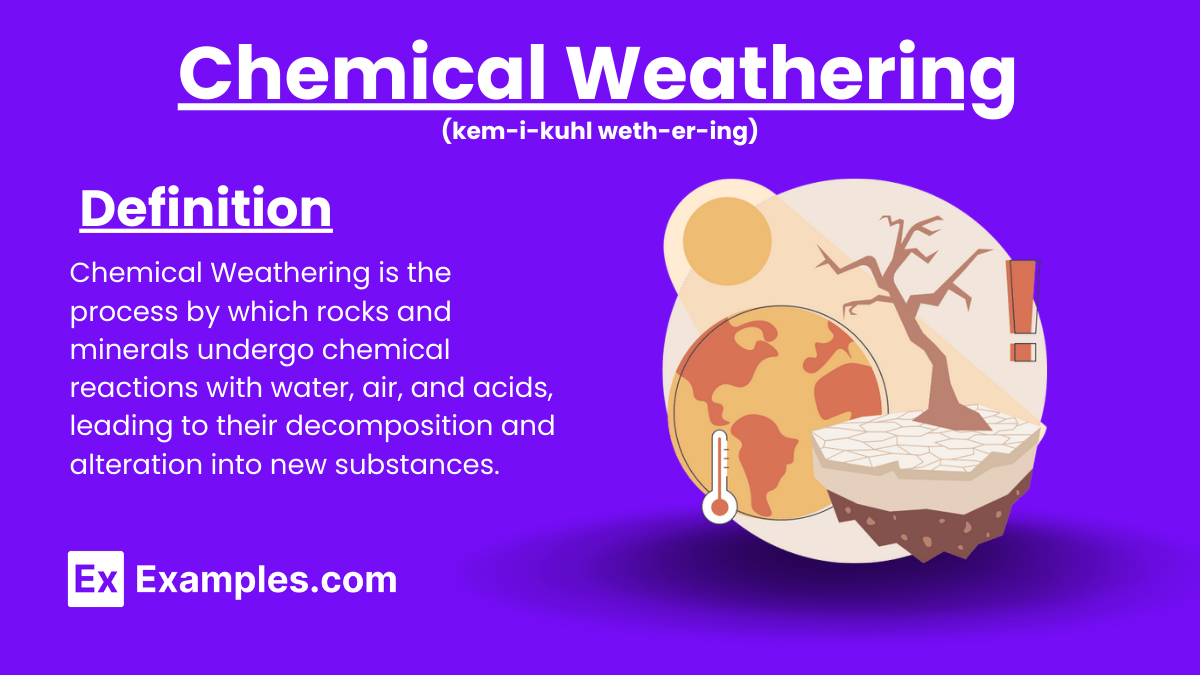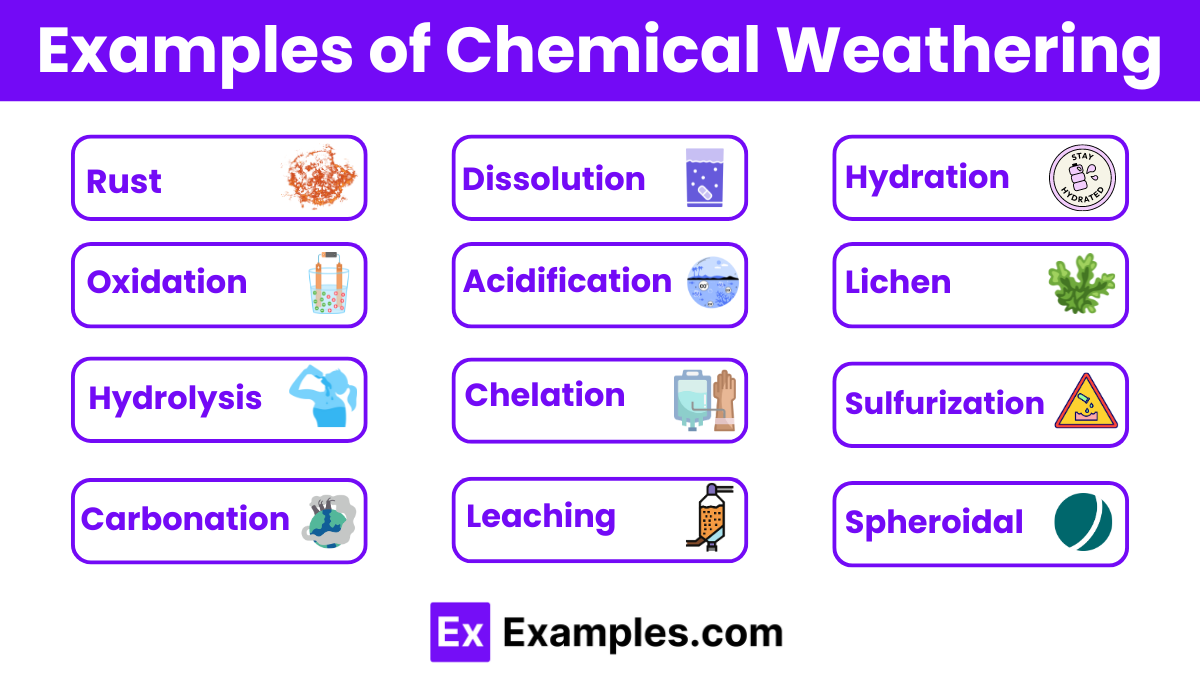Which of the following is an example of chemical weathering?
Wind erosion of rock
Freezing and thawing of water in cracks
Acid rain breaking down limestone
Roots growing into cracks of rocks


Chemical weathering involves the breakdown of rocks and minerals through chemical reactions, often influenced by water, oxygen, acids, and biological processes. This process transforms the original materials into new substances, significantly impacting soil formation and nutrient cycling within ecosystems. Chemical weathering is crucial for maintaining soil health, supporting plant growth, and sustaining diverse ecosystems. Factors such as temperature, precipitation, and the presence of organic acids from plants and microbes accelerate chemical weathering in various environments.
Chemical weathering is the process by which rocks and minerals are broken down through chemical reactions, primarily involving water, acids, and gases. This transformation alters the chemical composition of the original materials, leading to soil formation and nutrient release in ecosystems.

Hydrolysis Process
Oxidation Process
Carbonation Process
Dissolution Process
Acidification Process:
Hydrolysis involves water reacting with minerals to form new minerals like clay.
Oxidation occurs when minerals react with oxygen, forming oxides like rust.
Carbonation involves carbonic acid dissolving minerals like limestone.
Dissolution is when water dissolves soluble minerals in rocks.
Acid rain accelerates chemical reactions that break down rock minerals.
Silicate minerals like feldspar are commonly affected by hydrolysis.
Iron-rich rocks form rust, weakening their structure.
Carbonation dissolves limestone, creating voids that can develop into caves.
Chemical weathering breaks down rocks into minerals that contribute to soil.
Water, oxygen, carbon dioxide, and acids are primary agents.
Text prompt
Add Tone
10 Examples of Public speaking
20 Examples of Gas lighting
Which of the following is an example of chemical weathering?
Wind erosion of rock
Freezing and thawing of water in cracks
Acid rain breaking down limestone
Roots growing into cracks of rocks
What is the primary agent responsible for chemical weathering?
Oxygen
Carbon dioxide
Water
Nitrogen
Which of the following processes best describes oxidation in chemical weathering?
Rocks dissolving in water
Rocks rusting due to exposure to oxygen
Rocks breaking due to plant roots
Rocks cracking due to freeze-thaw cycles
How does carbonic acid contribute to chemical weathering?
It physically breaks down rocks
It causes rocks to freeze and expand
It allows plant roots to grow into rocks
It forms when carbon dioxide dissolves in water, leading to rock dissolution
What type of rock is most susceptible to chemical weathering?
Granite
Quartzite
Basalt
Limestone
Which mineral in rocks is most affected by hydrolysis during chemical weathering?
Quartz
Feldspar
Mica
Calcite
In which environment does chemical weathering occur most rapidly?
Cold and dry regions
Hot and wet regions
Cold and wet regions
Hot and dry regions
Which of the following is NOT a form of chemical weathering?
Oxidation
Hydrolysis
Frost wedging
Dissolution
Which of the following conditions enhances chemical weathering through the process of dissolution?
Warm temperatures
Acidic water
High oxygen levels
Low rainfall
Which type of weathering involves the transformation of feldspar minerals into clay?
Frost action
Biological weathering
Erosion
Hydrolysis
Before you leave, take our quick quiz to enhance your learning!

